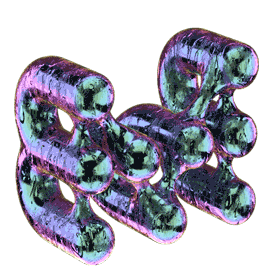


























Symbiosis 2.0
Hong Kong Arts Centre, a4/F Pao Galleries (gallery A)
24–29 March 2023 March 2023
Curated by: Richard Bakes
Artists:
DUNA (Lenka Bakes)
Jakub Choma
Barbora Kleinhamplová
Martin Kohout
Alena Kotzmannová
Václav Kopecký
Kateřina Ondrušková
Jiří Matějů
Jiří Skála
Jiří Thýn
Miroslava Večeřová
Monika Žáková
Symbiosis 2.0 is a loose continuation of the exhibition Co-Exist, which was realized at the Prague House in Brussels. This time the exhibition has been organized in cooperation with the Consulate General of the Czech Republic in Hong Kong, Prague Art Week 23, and AGSU (the Alliance of Czech Contemporary Art Galleries). The exhibition will take place at the Hong Kong Arts Centre (Gallery A) from 24 to 29 March 2023.
The artists were selected in direct cooperation with the galleries that make up AGSU and Prague Art Week23. The galleries collaborating in the exhibition are Lucie Drdova Gallery, hunt kastner, Kvalitář, Polansky Gallery, Berlinskej Model and Hong Kong based Double Q gallery.
Symbiosis 2.0
What exactly does an autonomous individual mean in nature or in the universe? Where does one organism end and another begin? Organisms can never be understood in isolation, for they are a set of active agents that make up our environment and which are studied by the science of ecology. The extent to which some living forms can coexist is perfectly illustrated by an organism that covers more than 8 % of the globe – the lichen. This organism and its unique concept of survival is the loose inspiration and leitmotif for the entire concept of the exhibition at the Hong Kong Arts Centre.
We are gigantic colonies of symbiotic genes*
Lichens have been the subject of heated scientific debate since the nineteenth century, and they continue to confound our notions of identity to this day. A lichen is a symbiotic community formed by a fungus (a mycobiont) and an algae or cyanobacteria (a photobiont). Thanks to their relationship, the two counterparts can live in places where neither could survive alone. It is a beneficial and fortifying parasitism. The entire system of operation of this organism even contradicts Darwin’s theory that species arise by growing away from each other so that their evolutionary lineages branch out like the crowns of trees. In this case they have run together.
Symbiotic partners rapping metabolic songs
For the study of lichens, an entirely new terminology had to be invented, and so in 1877 the German botanist Albert Frank coined the term SYMBIOSIS, which would not burden the described relationship of two or more entities in an organism with preconceived notions. Thus, a new biological principle emerged from the study of lichens. Evolution is not competition and conflict. Evolution is not a football match or a war in which one side tries to defeat the other: lichens, by confirming the hypothesis of duality, thus created a basic model example of positive cooperation not only between species but also between kingdoms.
The whole is much more than the sum of its parts
Many inhabitants of our ecosystem still think only in terms of “me or them,” with surveys showing that up to a third of the people on the planet do not cooperate with others. Of course, lichens also have their destructive mechanisms – for example, through etching they can eat away at the stone or concrete on which they grow. But after they die, they decompose and form the first soil in the new environment, and it is thanks to them, for example, that minerals can enter the metabolisms of living beings. Most of the minerals in our bodies have in fact probably passed through lichens at some point. The art of cooperation – of proximity to strangers – based on coexistence in a particular environment is therefore always ultimately constructive and strengthens, among other things, the dynamic resistance of all living things, their so-called resilience.
In his book Down to Earth, Bruno Latour remarks: “We must agree to define a dwelling place as that on which a terrestrial depends for its survival, while asking what other terrestrials also depend on it?”
Sources: *Richard Dawkins, Merlin Sheldrake: Entangled Life;
Bruno Latour: Down to Earth
PRAGUE ART WEEK is an open platform for the cooperation of the most important institutions in the Prague art scene and an annual art festival with the aim of connecting galleries, museums, exhibition halls, as well as art collections and other art-oriented organizations. The vision of PRAGUE ART WEEK is to make Prague stand out on the art world map and contribute to the internationalisation of the Czech art scene.
SUMO Prague is an international gallery co-op program which brings together gallerists, artists, curators, collectors, and art journalists in Prague. This year’s theme underlines the ever increasing need for communication, exchange, and solidarity in light of recent events. The participating galleries present exhibitions, performances, lectures, and other events in cooperation with international partners as well as local institutions. SUMO’s aim is to expand our artistic networks and to draw a wider audience to contemporary art.
The Alliance of Czech Contemporary Art Galleries (AGSU) is a partnership of contemporary art galleries whose primary principle is to act as a platform from which we can more formally initiate cooperative projects, share ideas, and initiate discussion about how we can most effectively work together to help cultivate an original, high-quality art scene that will be mutually beneficial for us all.



